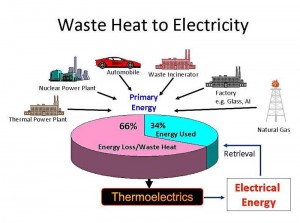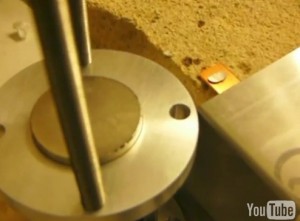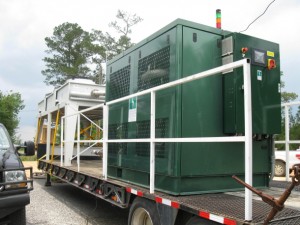An oil drill in Mississippi is breaking new ground in waste heat, using unwanted water to run a generator that runs on waste heat.
ElectraTherm, which makes the waste heat generator, said the Denbury oil well near Laurel, Miss., has successfully installed its GreenMachine product and shown that it can provide 20 percent of the electric power needed for the drilling. The demonstration was funded by a $460,000 federal government grant, half of which was paid for by one of ElectraTherm’s distributors.
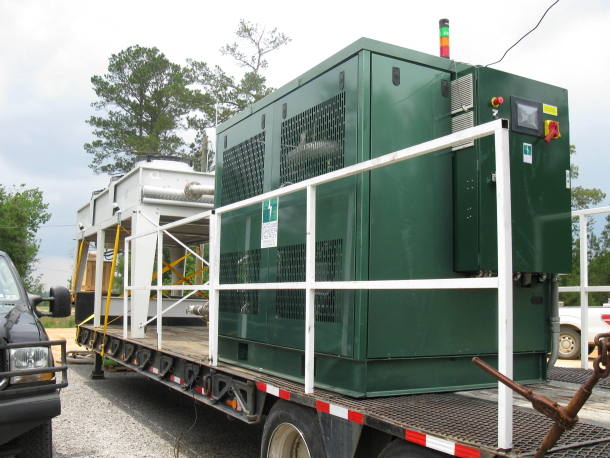
The waste heat generator can be delivered on the skid of a tractor trailer. The green machine is the actual generator while the white machine with the fans on left are used for cooling the refrigerant in the loop. (Credit: ElectraTherm)
Waste heat is considered a relatively untapped source of energy that could make many industrial processes, such as power generation or manufacturing, more efficient.
Electratherm’s generator is designed to operate using a relatively low-temperature heat source and produce between 30 kilowatts and 65 kilowatts. At the Mississippi well, drillers seeking new sources of oil generate 4,000 barrels of unwanted water per day. At 204 degrees Farenheit, it can operate ElectraTherms’ GreenMachine.
The generator operates using a similar principle to ground-source heat pumps. The heat from the water, or another heat source, causes a refrigerant fluid in tubes to evaporate. The pressure from that gas turns a mechanism connected to a generator to make electricity. Using fans, the gas is then cooled down back into liquid form to start the process again.
Oil wells have used waste heat to generate electricity before, but the advantage the Green Machine has in the field is that it’s portable, ElectraTherm representative Celeste Dodge said today. After one well has been drilled, it can be moved to another location. The generator in Mississippi was installed in 50 hours.
Waste heat is a free source of energy, but waste heat generators compete with grid electricity prices. In places where electricity costs 10 cents or higher per kilowatt-hour, the return on investment for a GreenMachine is four to six years, according to the company. The national average is 11 cents per kilowatt-hour. In places with cheaper electricity, such as the U.S. Southeast, there isn’t a big incentive to invest in waste heat generators without grants or policies to promote renewable energy, she said.
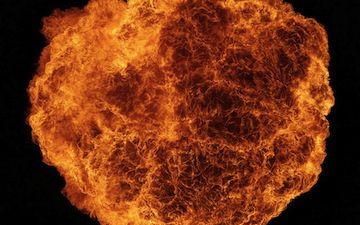

 Follow
Follow